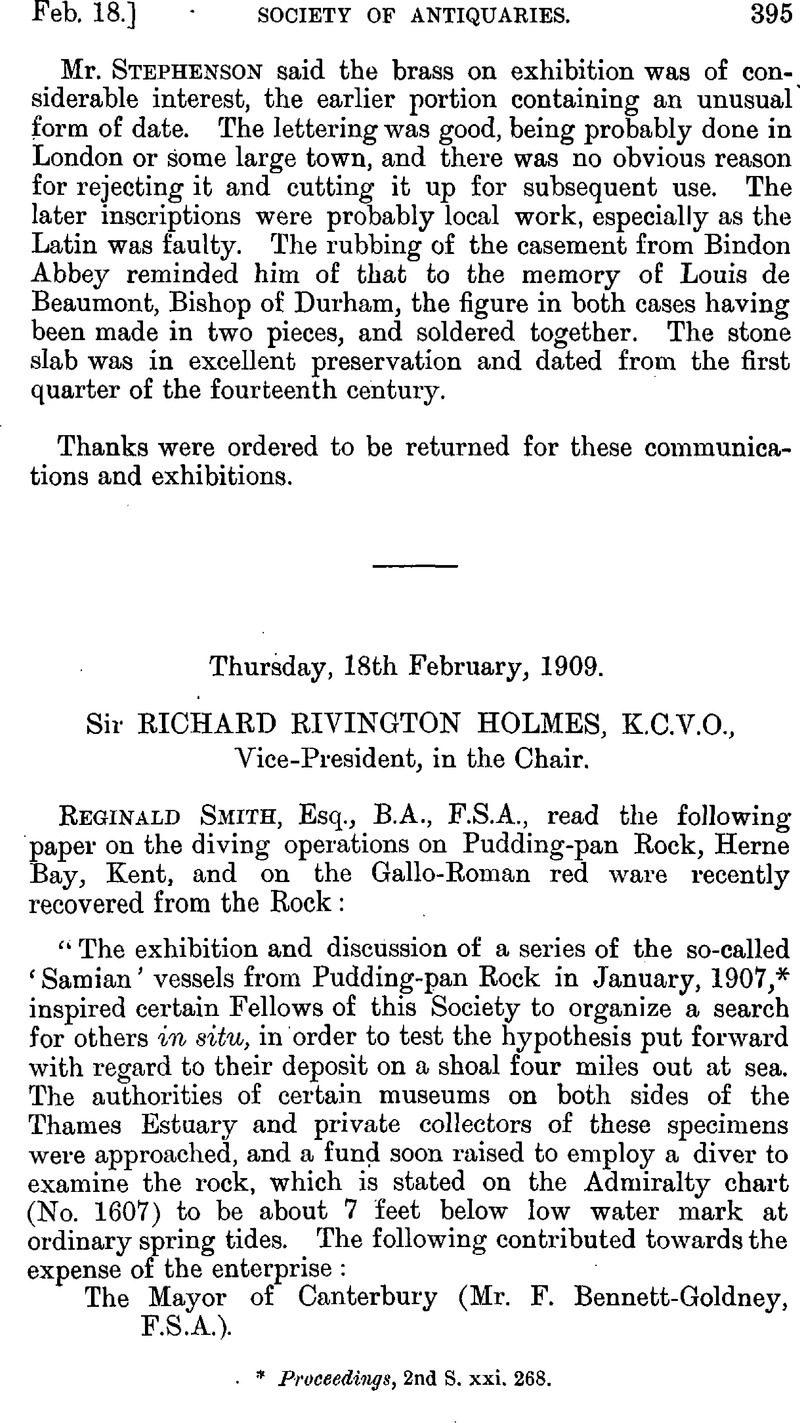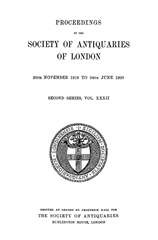Article contents
Thursday, 18th February, 1909
Published online by Cambridge University Press: 10 May 2010
Abstract

- Type
- Proceedings
- Information
- Copyright
- Copyright © The Society of Antiquaries of London 1909
References
page 395 note * Proceedings, 2nd S. xxi. 268.
page 398 note * Gaulish place-names tvsciacvs, tvssiacvs and tusiacvs are given by Holder, Alt-celtischer Sprachschatz, s. v.
page 404 note * H. B. Walters, Cat. Roman Pottery, M 1749 ; a similar section is given in Obergermanisch-raetische Limes, Kastell Pfünz, Lief. xiv. pl. vi. Tassen, fig. 8.
page 404 note † Baudry et Ballereau, Puits funéraires gallo-romains du Bernard (Vendée), 219, fig. 1 ; the associated vase is between 52 and 55 of Dragendorff's series.
page 404 note ‡ E. Tudot, Figurines en Argile, 87, fig. cviii.
page 405 note * H. B. Walters, Cat. Roman Pottery, Nos. M 1081, 1108, 1146, 1404 have the petals depressed in the middle, and No. 1594 has larger petals ; see Déchelette, type No. 1180.
page 405 note † τRVϹΙΑΝΙ, at Cirencester, see Proceedings, 2nd S. xxi. 284.
page 405 note ‡ Walters, Cat. Roman Pottery (British Museum), M 1627, where the third and fourth letters are not joined (Type 27). Corpus, xiii. 10, 010, 169.
page 410 note * In Germany it was used on black or grey ware during the second half of the first century.
page 411 note * Der Obergermanisch-raetisclie Limes, Kastell Alteburg-Heftrich, Lief, xxiii. 12.
page 412 note * References are given in Proceedings, xxi. 290.
page 414 note * H. Willers, Neue Untersuchungen über die römische Bronze-industrie von Capua und von Nieder-Germanien, 26, pl. iii. fig. 4.
page 414 note † Mémoires de la Société des Antiquaires du Nord, 1890–5, 202.
page 414 note ‡ The round moulding within, in the angle between the side and bottom, recalls a form found at Hofheim in the Taunus, dated between 40–60 a.d., but the London piece is a simplified and somewhat later example (Annalen des Vereins für Nassauische Altertumskunde, xxxiv. (1904), pl. vi. fig. 2). Compare Group 68 in the collection of Roman pottery at Colchester Museum.
- 2
- Cited by


